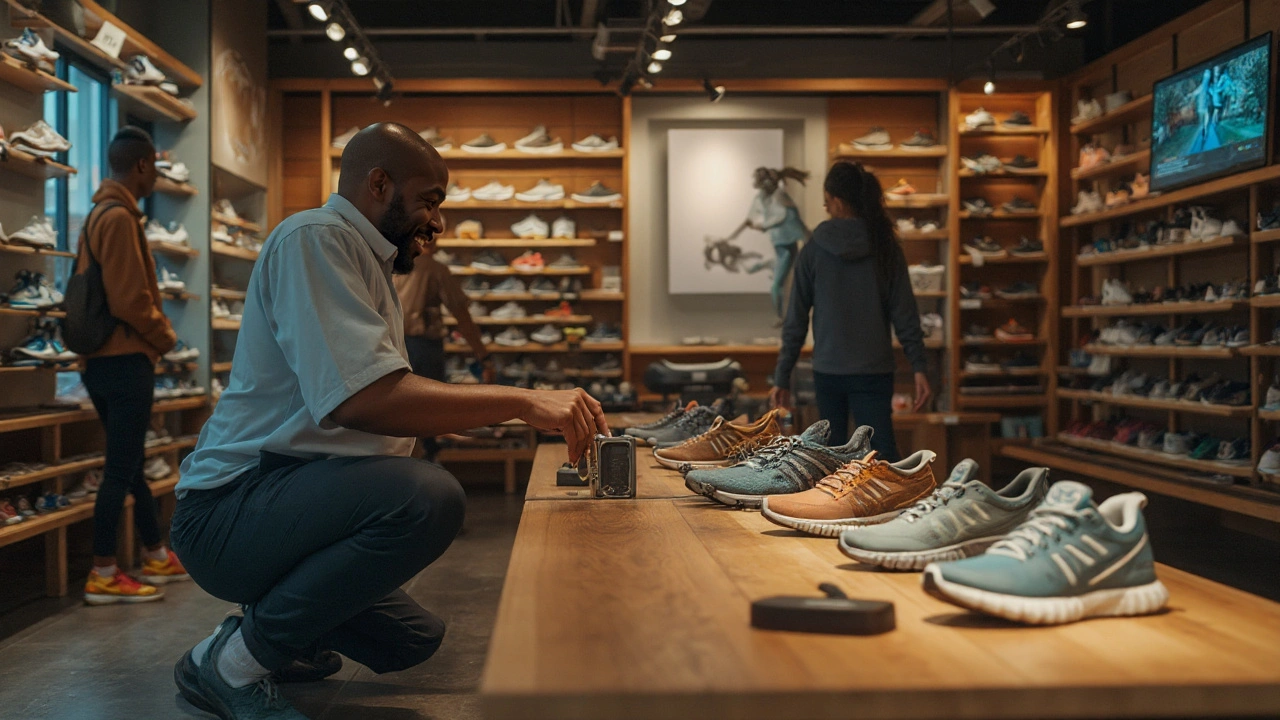Heel-to-Toe Drop: What It Is and Why It Matters
If you’ve ever looked at a sneaker’s specs and saw something called “heel‑to‑toe drop,” you probably wondered what the fuss was about. In simple terms, the drop is the height difference between the heel and the forefoot when the shoe is on a flat surface. A larger drop (like 10‑12 mm) lifts the heel higher, while a low‑drop shoe (0‑4 mm) keeps the foot flatter.
How Drop Shapes Your Gait
The drop directly influences how your foot lands and rolls forward. A high drop tends to push you onto a heel‑strike, which can feel cushier but may increase stress on the knees. Low‑drop shoes encourage a mid‑foot or fore‑foot strike, often giving a more natural feel and less impact on the joints. Your natural stride, ankle flexibility, and running speed all play a role in which drop works best for you.
Choosing the Right Drop for You
Start by checking how you normally run or walk. If you’re used to landing on your heels, a moderate drop (8‑10 mm) can feel comfortable. If you’ve been told to shift toward a mid‑foot strike, try a low‑drop shoe and give your calves a few weeks to adapt. Remember, the change isn’t instant – the muscles in your lower leg need time to get stronger. If you experience calf tightness or shin pain after switching, back off a bit and add calf stretches.
Another practical tip is to test the shoe in the store. Stand on a flat surface and see if the heel feels noticeably higher than the forefoot. Walk a few steps; you should feel balanced, not like you’re tiptoeing or slouching. If the shoe feels unstable, try a slightly higher drop for more heel support.
Beyond running, heel‑to‑toe drop matters for everyday activities. People with flat feet often benefit from a small drop that provides a bit of arch support, while those with high arches might like a higher drop for added cushioning. It’s not a one‑size‑fits‑all situation, so experiment and listen to your body.
Bottom line: the heel‑to‑toe drop is just one piece of the shoe puzzle, but it can change how your feet move, how much stress lands on your joints, and how comfortable you feel during a workout or a long walk. By understanding your own stride and testing a few different drops, you can pick shoes that match your foot mechanics and keep injuries at bay.
How to Choose Athletic Footwear to Prevent Acute Muscle Injuries
- 1.09.2025
- Posted in Health
- 8 Comments

Stop muscle pulls before they start. Learn how to pick shoes with the right fit, drop, stability, and traction for your sport, surface, and body-without the hype.

